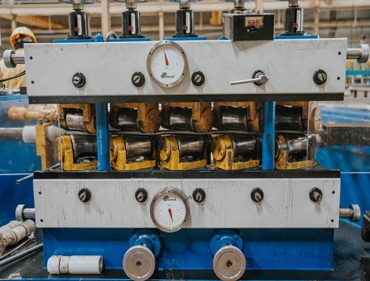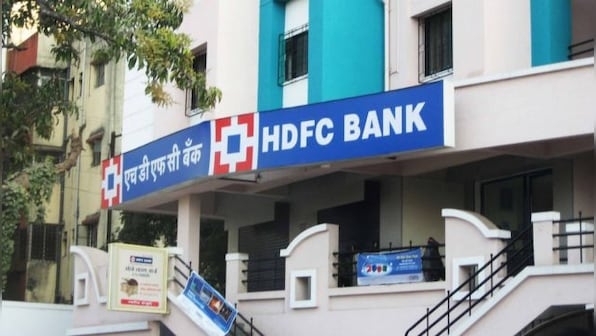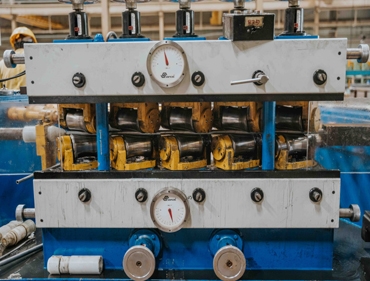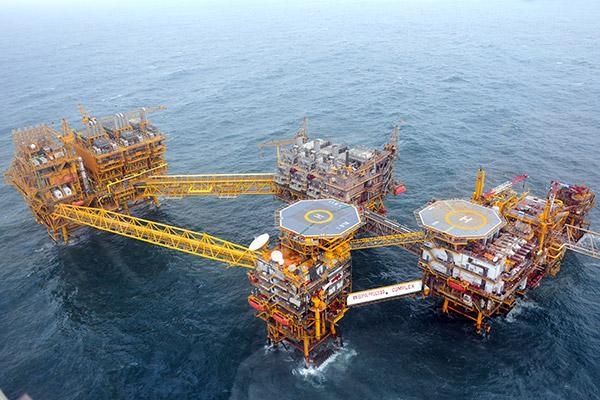स्मॉल कैप; सही ROE और अन्य पैरामीटर वाले 5 स्टॉक: स्मॉल कैप में एक अंतर्निहित जोखिम होता है जो तकनीकी प्रकृति का होता है लेकिन फिर भी यह एक बड़ा सिरदर्द हो सकता है, अगर कोई गलत कदम उठाता है। इनमें से कई स्मॉल कैप स्टॉक में सीमित फ्लोटिंग स्टॉक होता है, जिसका मतलब है कि मांग में उछाल से कीमतों में तेज उछाल आ सकता है, जो तेजी के समय में अच्छा है, लेकिन साथ ही अगर वैल्यूएशन के समय थोड़ी बिक्री होती है, तो शायद ही कोई खरीदार हो। इसलिए, इन स्टॉक के सर्किट से सर्किट तक नीचे जाने का जोखिम है। अगर संदेह है, तो इस साल मार्च में जो हुआ उसे देखें। यही वह जोखिम है जिसकी वजह से शायद मार्केट रेगुलेटर ने म्यूचुअल फंड को अपनी स्मॉल कैप स्कीम में पैसा इकट्ठा करने पर कुछ रोक लगाने की सलाह दी हो। लेकिन अप्रैल तक, उनमें से कुछ वापसी कर रहे हैं। उन सभी लोगों के लिए जो स्मॉल और माइक्रो कैप के दीवाने हैं, एक बुनियादी सिद्धांत याद रखना चाहिए। निवेश का मतलब किसी व्यवसाय में हिस्सेदारी लेना है और उस व्यवसाय में विकास की संभावनाएं होनी चाहिए और प्रबंधन पारदर्शी होना चाहिए। स्ट्रीट में दो चीजें हैं, एक सेक्टर या स्टॉक में वास्तविक मौलिक विकास और एक नैरेटिव जो स्ट्रीट तब बनाता है जब लिक्विडिटी बहुत अधिक होती है। इसलिए यदि कोई स्मॉल कैप स्टॉक खरीद रहा है, जहां कीमत नैरेटिव या स्ट्रीट की थीम से अधिक संचालित होती है, तो पोर्टफोलियो वैल्यू पर बड़ी गिरावट के लिए तैयार रहें, जैसा कि हमने मार्च 2024 में देखा था। तथ्य यह है कि मार्च में कई लोगों ने या तो स्टॉक खरीदने से पहले उन्हें देखने का संकल्प लिया होगा या स्मॉल कैप के मामले में म्यूचुअल फंड से जुड़े रहने का संकल्प लिया होगा। लेकिन अप्रैल आते-आते वे सभी वादे भूल गए और एक और सप्ताह की तेजी के साथ, मार्च में किए गए उन वादों का हश्र नए साल के संकल्पों जैसा ही होगा। प्रमोटर शेयरहोल्डिंग % स्मॉल कैप स्टॉक 30-सितंबर-22 गांधी स्पेशल ट्यूब्स 73.53% आंध्र पेपर 72.24% इंटरनेशनल ट्रैवल हाउस 61.69% आरपीजी लाइफ साइंसेज लिमिटेड 72.61% ताज जीवीके होटल्स एंड रिसॉर्ट्स 74.99% 31-दिसंबर-22 31-मार्च-23 73.53% 72.24% 73.53% 73.53% 30-सितंबर-23 30-दिसंबर-23 73.53% 72.31% 61.69% 73.53% 72.31% 72 .31% 72.24% 61.69% 61.69% 61.69% 61.69% 72.81% 72.61% 74.99% 74.99% 30-जून-23 72.81% 72.81% 72.81% 74.99% 74.99% 74.99% source: et
7 मिड और स्मॉलकैप निजी क्षेत्र के बैंक जिनमें 46% तक की उछाल की संभावना है: 2015 के बाद और फिर 2018 में, RBI ने विभिन्न बैंकिंग नीतियों में, पूंजी पर्याप्तता से लेकर परिचालन मैट्रिक्स तक, ऋण वितरण तंत्र में एक मजबूत बदलाव किया। बैंकिंग जैसे क्षेत्रों में जब विनियामक बदलाव होता है, तो हर खिलाड़ी को नियमों के एक नए सेट का पालन करना पड़ता है। किसी भी इकाई के लिए विनियामक व्यवस्था से बच पाना संभव नहीं है। इससे ऐसी स्थिति पैदा होती है जहाँ बड़ी इकाइयाँ या पहले से ही सर्वोत्तम प्रथाओं का पालन करने वाली इकाइयाँ कम समय में एक नई व्यवस्था में बदलाव करने में सक्षम होती हैं और सबसे पहले पुरस्कृत होती हैं। अन्य जो अनुसरण करने में समय लेते हैं, जो आमतौर पर छोटे या मध्यम आकार के खिलाड़ी होते हैं, वे बाद में ध्यान आकर्षित करते हैं। इसलिए, जबकि ICICI और SBI लंबे समय से सुर्खियों में हैं, मध्यम और छोटे आकार के बैंक, जिन्होंने अपने काम को साफ करने में समय लिया, वे ध्यान आकर्षित करने की संभावना रखते हैं। उनके पास बहुत अलग तरह के हाइब्रिड स्वामित्व हैं, एक तरह से अर्ध निजी क्षेत्र के बैंक। ये निजी क्षेत्र के बैंक हैं, जो मध्यम आकार के बैंकों से बने हैं और विशेष क्षेत्रों में काम करते हैं। बैंकिंग जैसे क्षेत्रों में जब विनियामक पुनर्गठन होता है, तो हर खिलाड़ी को नियमों के एक नए सेट का पालन करना पड़ता है। इससे ऐसी स्थिति पैदा होती है, जहाँ बड़ी इकाइयाँ या पहले से ही सर्वोत्तम प्रथाओं का पालन कर रही इकाइयाँ कम समय में एक नई व्यवस्था में बदलाव करने में सक्षम होती हैं और सबसे पहले उन्हें ही पुरस्कृत किया जाता है। अन्य जो पालन करने में समय लेते हैं, जो आम तौर पर छोटे या मध्यम आकार के खिलाड़ी होते हैं, उन्हें बाद में ध्यान मिलता है। मध्यम आकार के बैंकों का एक समूह है, जिनके पास बड़े निजी बैंकों की तरह वितरण पहुँच नहीं है, लेकिन जब स्वामित्व की बात आती है तो वे पीएसयू बैंकों के समान नहीं होते हैं। उनके पास स्वामित्व के बहुत अलग संकर प्रकार हैं, एक तरह से अर्ध निजी क्षेत्र के बैंक। ये मध्यम आकार के बैंकों के निजी क्षेत्र के बैंक हैं जो विशेष क्षेत्रों में काम करते हैं। समय के साथ उन्हें भी अपने काम को साफ करने के लिए मजबूर होना पड़ा है। बैंकिंग स्टॉक - अपसाइड पोटेंशियल 24 अप्रैल, 2024 नवीनतम औसत स्कोर कंपनी का नाम रेको विश्लेषक गणना * अपसाइड पोटेंशियल % 1Y रिटर्न % इंस्ट स्टेक % मार्केट कैप टाइप मार्केट कैप करोड़ रुपये कर्नाटक बैंक 10 खरीदें 5 51.3 32.8 मिड 75.5 8,475 DCB बैंक 8 खरीदें 20 46.1 45.0 छोटा 21.0 3,875 साउथ इंडियन बैंक 8 खरीदें 6 34.0 10.1 मिड 104.9 7,547 जम्मू और कश्मीर बैंक 9 मजबूत खरीदें 1 22.6 9.7 मध्य 161.0 14,381 करुर वैश्य बैंक 10 मजबूत खरीदें 12 20.0 36.0 मध्य 103.6 15,433 सिटी यूनियन बैंक 6 खरीदें 21 18.7 53.3 मध्य 19.4 11,540 CSB बैंक 8 खरीदें 5 16.5 17.0 मध्य 42.7 7,021 • विश्लेषकों द्वारा दिए गए उच्चतम मूल्य लक्ष्य से गणना की गई source:et
INR10,000 crore HDFC Credila deal: Why PE funds are upbeat on the education-loan market: Last month, HDFC Bank concluded the sale of 90% stake in HDFC Credila to private-equity firms BPEA EQT and ChrysCapital for INR9,553 crore, making it one of the largest PE deals in the Indian market. So, how is the sector poised to grow and what gives NBFCs an edge over banks in the education-loan space? How would you feel if the company you founded 13 years ago fetched a valuation of over INR4,000 стогe at the time of your exit (in December 2019)? Great, right? But what if the same company is now valued more than INR10,000 crore? The founder Ajay Bohora feels proud but does not have any FOMO. "While the market has expanded, only two-three out of 10 applicants for education loan for foreign studies, manage to get it. This indicates that the market is huge and there is still more for NBFCs to operate," says Bohora, who founded Credila, India's first education loan NBFC, along with this brother in 2006. In 1989, Bohora, who wanted to go to an American university for higher studies, had very few options of financing his studies. He managed to secure one from a public-sector bank after great difficulty. "Income has not been able to beat even inflation. It is exactly similar to how we can't afford a house in Mumbai, but our parents could. The same thing is repeating for the next generation. There will be an inflection point where opting for a quality degree would necessarily mean taking an education loan," said Mangesh Zope, founder of Peaceful-Loan.com, a marketplace connecting students with lenders. "When I graduated from IIM Calcutta, my fees was INR12 lakh (in 2012) and now it is INR25 lakh - INR30 lakh. In the study abroad segment, tuition fee is about 60%-70%, and the rest is living expenses, which is again going through the roof," Zope said. He added that state-owned banks give up to INR7.5 lakh of unsecured education loans (without any collateral or third-party guarantee), while private banks and NBFCs can go up to INR1 crore and INR75 lakh, respectively. In case of secured education loans backed by collateral, public-sector banks have an upper limit of INR1.5 crore, whereas private lenders don't have any specific caps. In terms of approval time, NBFCs are the fastest. source:et
Stock Radar: LTIMindtree showing signs of bottoming out; time to buy? Short-term traders with high-risk profiles can look to buy the stock now for a possible target of Rs 5,000- 5,200 in the next few weeks, suggested experts. The IT stock hit a 52-week high of Rs 6,442 on January 5, 2024, but failed to hold the momentum. It closed at Rs 4,721 on April 23, 2024, which translates into a fall of over 26%. It has remained flat from a 3-6-month perspective, largely in line with the selling pressure seen in the IT index. The index has fallen over 7% in the last 3 months but rose a little over 10% in a 6-month time frame. LTIMindtree, a part of the IT sector, has plunged over 26% from its recent high but has gained support at the lower end of a rising trendline on the daily charts, which suggests a possibility of a technical bounce back. Short-term traders with high-risk profiles can look to buy the stock now for a possible target of Rs 5,000-5,200 in the next few weeks, suggested experts. The IT stock hit a 52-week high of Rs 6,442 on January 5, 2024, but failed to hold the momentum. It closed at Rs 4,721 on April 23, 2024, which translates into a fall of over 26%. It has remained flat from a 3-6-month perspective, largely in line with the selling pressure seen in the IT index. The index has fallen over 7% in the last 3 months but rose a little over 10% in a 6-month time frame. LTIMindtree breached its major moving averages on the daily charts but took support above 4,600 levels, which also coincides with the lower end of the rising trendline. The trendline was formed by connecting the lows of May 2022, April 2023 and April 2024. In terms of price action, the stock is trading above 5-DMA but below 10,20,30,50,100 and 200-DMA on the daily charts. "LTIMindtree stock has witnessed a decent erosion from the peak zone of 6,442 levels with currently showing signs of bottoming out near the long-term trend line support of 4,600 levels," said Vaishali Parekh, vice- president - technical research at Prabhudas Lilladher. "The RSI has flattened out after the slide and has an indication of a positive trend reversal to anticipate upward movement from current levels," she said. "With the bias indicating slight improvement, we suggest accumulating the stock for the upside targets of 5,000-5,200 levels in the coming days/weeks with a stop loss of 4,550," recommended Parekh. source: et
The rise and rise of the Big Mac Index foretells for Indian equities: The Big Mac inflation, which uses burgers instead of basket of goods used by economists to measure consumer pricing, is on a continuous uptrend since 2021. It indicates that US rate cuts are far away. So, what does it mean for Indian stock market? While the US's consumer price index (CPI) inflation is down, its Big Mac inflation is rising relentlessly. And investors aren't Lovin' It! Are costly burgers the reason why foreign investors have turned net sellers in Indian equities in April? One wonders. But certainly, they are pushing bond yields in the US market higher. Over the last one year, the 10-year bond yields are high at 4.6% as compared to 3.57% in April 2023. In India, 10-year bonds are traded at around 7% throughout the year and are being presently traded at 7.21%. For foreign investors to come to India, they should find Indian interest rates attractive in terms of their spread or rate differential. The present 2.6% spread is not good enough for FIIs (foreign institutional investors) to stick to Indian markets. And if we go by the cost of burgers that are dictating inflation in the US markets, it will still take some time for these foreign investors to make a beeline for vada pav (Indian burger). Indian investors will have to wait till FIIs come in droves to our expensive and even spicy market. From as many as 5-6 rounds of projected rate cuts at the start of 2024, to only two or none now - that too in later part of the year - the consensus view on US rate cuts has shifted from "greater and sooner" to "lesser and later". Goldman Sachs projects just two rate cuts in 2024, starting in July rather than June. Bank of America has pushed back its first Fed cut call to December from June. source: et
Small caps; 5 stocks with right ROE and other parameters: Small caps have an inherent risk which is technical in nature but it still can be a big headache, if one is caught on the wrong foot. A number of these small caps stocks have limited floating stock, which means a bout of demand can lead to a sharp rise in prices, which is good in bullish times, but at the same time if there is a small bout of selling at a time when valuations are high, there is hardly any buyer. So, the risk of these stocks moving downward circuit to circuit. If in doubt, just look at what happened in March this year. That is the risk which probably made the market regulator give advice to mutual funds to put some restraint on collecting money in their small cap schemes. But by April, some of them are making a comeback. For all those die hard small and micro cap fans, one basic principle should be remembered. Investing is about taking stake in a business and that business should have growth prospects and management should be transparent. The street has two things, one is real fundamental development in a sector or a stock and there is a narrative which street builts when the liquidity is very high. So if one is buying a small cap stock where price is driven more by narrative or the theme of the street, be ready for a big drawdown on portfolio value, pretty much the same as we saw in March 2024. The fact is that in March many people would have made a pledge to either look at stocks before buying them or would have made a pledge to stick to mutual funds in case of small caps. But come April all those promises have been forgotten and one more week of bullish moves, those pledges made in march will meet the same fate as new year resolutions. Promoter Shareholding % Small Cap Stocks 30-Sep-22 Gandhi Special Tubes 73.53% Andhra Paper 72.24% International Travel House 61.69% RPG Life Sciences Limited 72.61% TAJ GVK Hotels & Resorts 74.99% 31-Dec-22 31-Mar-23 73.53% 72.24% 73.53% 73.53% 30-Sep-23 30-Dec-23 73.53% 72.31% 61.69% 73.53% 72.31% 72.31% 72.24% 61.69% 61.69% 61.69% 61.69% 72.81% 72.61% 74.99% 74.99% 30-Jun-23 72.81% 72.81% 72.81% 74.99% 74.99% 74.99% source:et
7 mid and smallcap private sector banks with upside potential of up to 46%: Post 2015 and then again in 2018, RBI did a strong rejig in various banking policies, right from capital adequacy to the operational matrix, to loan disbursement mechanism. In sectors like banking when a regulatory rejig takes place, every player has to follow a new set of rules. It is not possible for any entity to escape the regulatory regime. This leads to a situation where entities which are large or are already following best practices are able to make transition to a new regime in a short span of time and are the first one to get rewarded on the street. Others who take time to the follow which normally are smaller or mid sized players tend to get attention later. So, While ICICI and SBI have been in the limelight for a long time, mid and small-sized banks, who took time to clean up their act are likely to get the attention. They have very different hybrid kinds of ownership, a sort of quasi private sector banks. These are private sector banks of mid-sized banks which operate in particular regions. In sectors like banking when a regulatory rejig takes place, every player has to follow a new set of rules. This leads to a situation where entities which are large or are already following best practices are able to make transition to a new regime in a short span of time and are the first one to get rewarded on the street. Others who take time to the follow which normally are smaller or mid sized players tend to get attention later. There is a set of mid-sized banks which don't have the distribution reach which large private banks have, but when it comes to ownership they are not the same as the PSU banks. They have very different hybrid kinds of ownership, a sort of quasi private sector banks. These are private sector banks of mid-sized banks which operate in particular regions. Over a period of time they have also been forced to clean up their act. Banking Stocks - Upside Potential Apr 24, 2024 Latest Avg Score Company Name Reco Analyst Count * Upside Potential % 1Y Returns % Inst Stake % Market Cap Type Market Cap Rs Cr Karnataka Bank 10 Buy 5 51.3 32.8 Mid 75.5 8,475 DCB Bank 8 Buy 20 46.1 45.0 Small 21.0 3,875 South Indian Bank 8 Buy 6 34.0 10.1 Mid 104.9 7,547 Jammu and Kashmir Bank 9 Strong Buy 1 22.6 9.7 Mid 161.0 14,381 Karur Vysya Bank 10 Strong Buy 12 20.0 36.0 Mid 103.6 15,433 City Union Bank 6 Buy 21 18.7 53.3 Mid 19.4 11,540 CSB Bank 8 Buy 5 16.5 17.0 Mid 42.7 7,021 • Calculated from highest price target given by analysts source:et
इन कंपनियों के पास मजबूत बैलेंस शीट और कम लागत संरचना है: भारतीय सीमेंट उद्योग में विस्तार ही खेल का नाम है। यहाँ चार सीमेंट निर्माता हैं जिनके पास मजबूत बैलेंस शीट और कम लागत संरचना है। भारत के सीमेंट उद्योग में, बड़े, अखिल भारतीय निर्माताओं के पास क्षेत्रों में मूल्य निर्धारण की शक्ति है, जिससे छोटे, क्षेत्रीय खिलाड़ियों के लिए बाजार निर्माता बनने की कोई गुंजाइश नहीं बचती। बड़ी फर्मों में, अल्ट्राटेक सीमेंट, अंबुजा सीमेंट्स और श्री सीमेंट विश्लेषकों की पसंदीदा पसंद हैं। व्यापक पहुँच के अलावा, इन कंपनियों के पास मजबूत बैलेंस शीट और कम लागत संरचना है। इसके अलावा, उन्होंने अपनी बैलेंस शीट को बढ़ाए बिना एक सुनियोजित तरीके से विस्तार किया है। अल्ट्राटेक सीमेंट: समय पर और आक्रामक रूप से मात्रा में वृद्धि भारत की सबसे बड़ी सीमेंट फर्म - अल्ट्राटेक सीमेंट की एक प्रमुख ताकत रही है। पिछले दो वर्षों में, कंपनी ने जैविक और अकार्बनिक दोनों तरीकों से क्षमता को 119.9 मीट्रिक टन से बढ़ाकर 140.4 मिलियन टन (MT) कर दिया है। वित्त वर्ष 25 के अंत तक कंपनी इसी तरह 30 मीट्रिक टन की अतिरिक्त क्षमता जोड़ने का अनुमान लगा रही है। वित्त वर्ष 27 के अंत तक कंपनी अपनी क्षमता को और बढ़ाकर 195.4 मीट्रिक टन करने की योजना बना रही है। इस विस्तार को दो मापदंडों के संदर्भ में देखा जाना चाहिए। एक है उद्योग में मांग चक्र। दूसरा है कंपनी की बैलेंस शीट पर इसका प्रभाव। इनमें से प्रत्येक पैरामीटर पर अल्ट्राटेक का स्कोर अच्छा है। वर्तमान में उद्योग में मांग चक्र कमजोर है। मांग चक्र के कम चरण में विस्तार से अल्ट्राटेक को आम चुनावों और मानसून के बाद मांग में सुधार होने पर लाभ उठाने में मदद मिलेगी। कंपनी के पास एक स्वस्थ बैलेंस शीट है और इसका ऋण-से-इक्विटी अनुपात एक से कम है। श्री सीमेंट: श्री सीमेंट भारत में सबसे कम लागत वाले सीमेंट उत्पादकों में से एक रहा है, क्योंकि यह प्रतिस्पर्धियों की तुलना में ग्रीन पावर का अधिक हिस्सा उपयोग करता है। कंपनी ने हाल ही में वित्त वर्ष 25 तक प्रीमियम उत्पादों की हिस्सेदारी को लगभग 9% से बढ़ाकर 15% करने की योजना की घोषणा की है। वर्तमान में, कंपनी की क्षमता 50.4 मीट्रिक टन है, जिसे वित्त वर्ष 27 तक बढ़ाकर 75 मीट्रिक टन किया जाएगा। विस्तार का एक बड़ा हिस्सा उत्तरी, पूर्वी और दक्षिणी भारत के अपने मौजूदा बाजारों में होगा। मांग, विशेष रूप से उत्तरी क्षेत्र में, श्री सीमेंट के लिए इस विस्तार का अधिकतम लाभ उठाने के लिए पर्याप्त स्थिर है, जिसे आंतरिक स्रोतों से वित्त पोषित किया जाएगा। विस्तार के बाद, कंपनी का ऋण-से-इक्विटी अनुपात एक से कम रहने की उम्मीद है। जे के सीमेंट्स: क्षेत्रीय खिलाड़ियों में, जे के सीमेंट्स, जो मध्य, उत्तर और पश्चिमी क्षेत्रों में काम करता है, अपने मजबूत बुनियादी सिद्धांतों और सफेद सीमेंट के संपर्क के कारण सबसे अलग है। वित्त वर्ष 19 और वित्त वर्ष 24 के बीच, कंपनी ने 16.1% की वार्षिक दर से क्षमता का विस्तार किया। इस अवधि के दौरान इसकी बिक्री मात्रा में 13.3% की वृद्धि होने की उम्मीद है। source: et
वर्षों की खामोशी के बाद इस तेल और गैस स्टॉक ने कैसे अपनी वापसी की: इस सरकारी कंपनी के साथ धैर्य रखने वाले निवेशक अब भरपूर लाभांश प्राप्त कर रहे हैं। जानिए कैसे। लगभग एक दशक के बाद, देश की सबसे बड़ी तेल और गैस खोजकर्ता ONGC अपने धैर्यवान निवेशकों को बड़ी रकम लौटा रही है। मार्च 2020 के 50 रुपये प्रति पीस के निचले स्तर से यह स्टॉक अब लगभग पाँच गुना बढ़ गया है और लगभग 300 रुपये पर कारोबार कर रहा है। इसका पिछला जीवनकाल उच्च स्तर 2014 में 312 रुपये था। पिछले कुछ कारोबारी सत्रों में, इस स्टॉक में 10% से अधिक की वृद्धि हुई, जबकि बेंचमार्क इंडेक्स, निफ्टी 50, इजरायल और ईरान के बीच बढ़ती शत्रुता के बीच कच्चे तेल की कीमतों में उछाल की चिंताओं के कारण 3% से अधिक सही हुआ। ब्रेंट क्रूड की कीमतें USD90 प्रति बैरल के आसपास मँडरा रही हैं और इस साल की शुरुआत में देखे गए USD70 के स्तर से बहुत अधिक कारोबार कर रही हैं। जेफरीज और मॉर्गन स्टेनली जैसी कई ब्रोकरेज कंपनियों को उम्मीद है कि आने वाले समय में ONGC बेहतर प्रदर्शन करेगी और शेयर में 40% से अधिक की तेजी देखने को मिलेगी। निफ्टी एनर्जी इंडेक्स 2020 में 9,750 के निचले स्तर से 315% से अधिक बढ़कर वर्तमान में 40,750 के स्तर पर पहुंच गया, जो बेंचमार्क निफ्टी 50 से आगे निकल गया, जिसने इसी अवधि के दौरान 200% की बढ़त हासिल की। 5% से अधिक की वार्षिक लाभांश उपज के साथ, कंपनी वित्त वर्ष 25 में INR55,000 करोड़ से अधिक का उच्चतम वार्षिक लाभ दर्ज करने के लिए तैयार है। वरिष्ठ अधिकारियों का कहना है कि वित्त वर्ष 25 में, कंपनी 10,000 बैरल का उत्पादन शुरू करेगी, जो धीरे-धीरे वर्ष के दौरान 45,000 बैरल तक बढ़ जाएगा। वित्तीय वर्ष के लिए D5 ब्लॉक से गैस उत्पादन भी लगभग 10 मिलियन क्यूबिक मीटर प्रतिदिन होगा। पिछले दो वित्तीय वर्षों में, ONGC का तेल उत्पादन लगभग 18.5 मिलियन मीट्रिक टन (mmt) था और इसका गैस उत्पादन लगभग 22.09 बिलियन क्यूबिक मीटर (bcm) था। मध्य पूर्व और पश्चिम में तनाव के बीच, तेल की कीमतें USD90 प्रति बैरल के आसपास मँडरा रही हैं। इसलिए, ONGC के लिए कच्चे तेल की प्राप्ति औसत USD65 प्रति बैरल से बहुत अधिक है। साथ ही, विशेष अतिरिक्त उत्पाद शुल्क (SAED) या विंडफॉल टैक्स नए KG बेसिन उत्पादन पर लागू नहीं होगा। source:et










Apr 25 2024, 09:26
- Whatsapp
- Facebook
- Linkedin
- Google Plus
0